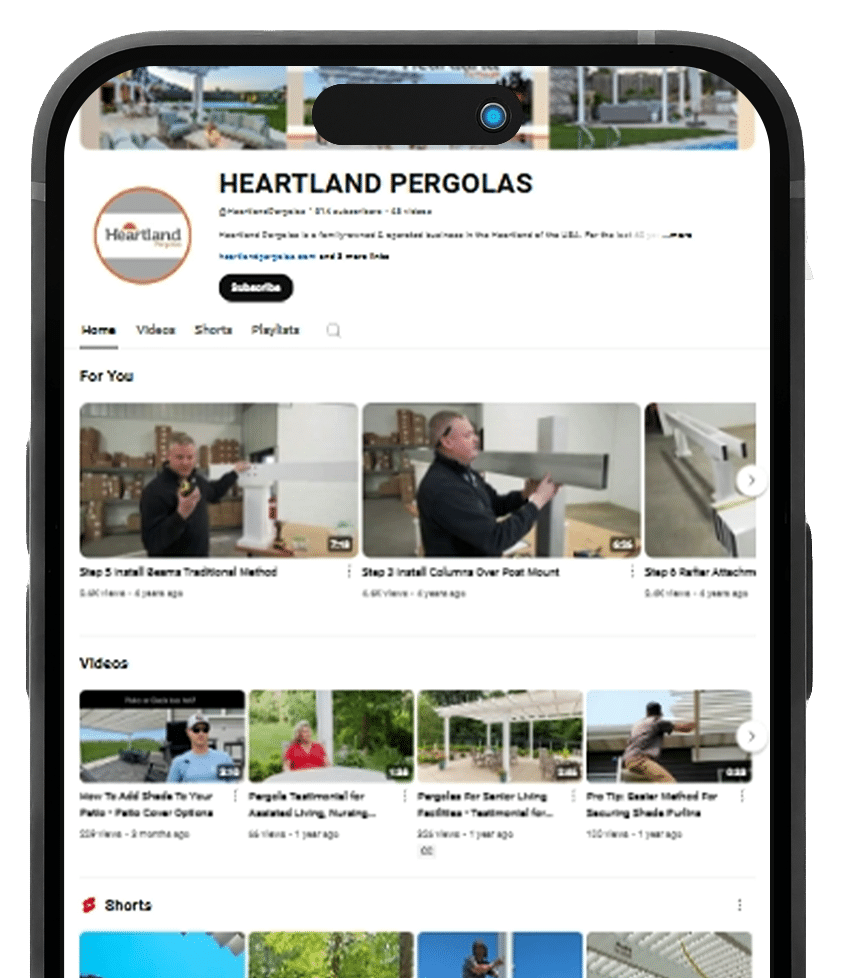What is the Purpose of a Pergola?
I hear the question asked a lot, “What is the purpose of a pergola?!” Typically followed by supporting comments of “Pergolas don’t provide shade!” “Pergolas don’t provide shelter!” “Pergolas won’t keep you dry!” “Why would anyone want a pergola?” It seems like a whole host of angriness towards a pretty cool structure. So, let’s talk about the pergola pros and cons!
How do Pergolas Work
At the most basic level a pergola can be described as an open-sided structure that is made up of posts or columns that support the open roof structure of rafters and beams. Now, there are many different types of pergolas out there but generally speaking, a pergola is an open-air structure. Their primary purpose is to define outdoor spaces, create visual interest and, and depending on the pergola, add shade to an area.
Pergolas are typically known to be made from wood, vinyl, metal, fiberglass or a combination of materials.
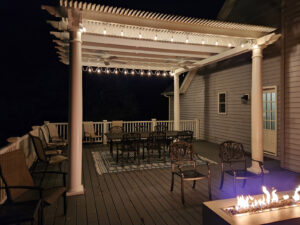
This vinyl pergola kit creates an outdoor dining area on the deck.
The nice thing about a pergola is that they can be attached to a structure or be free standing which gives it a lot of flexibility on location. You can put a pergola up on a deck, on your patio, out in a garden area, next to the pool, or put a pergola over an outdoor restaurant/dining area, etc.
Because a pergola is often made of just posts, beams and rafters, they make a great DIY project. Pergolas are relatively simple to build, don’t require as many materials as other outdoor structural elements, yet still add a big visual impact to a backyard or outdoor space.
Disadvantages of a pergola
Then, what are the disadvantages of having a pergola? Let’s start with the above comments. “Pergolas don’t provide shade.” The answer here is yes and no. Some pergolas provide shade, other pergolas do not. Many traditional pergolas only offer squared-off open rafters or a lattice style roof top. And those pergolas often do NOT offer much in the way of shade. The closer together the rafters or lattice are, the more shade that is created, but yes, those pergolas are more for decorative purposes.

An open grid structure or lattice style pergola roof often offers no shade on its own.
Now those open rafter or grid style pergolas can be made to create shade when adding climbing plants or an additional pergola cover, so you do have options even if you own a pergola already that does not provide shade.
Another disadvantage of a pergola can be maintenance and lifespan. In wood pergolas, yearly maintenance to keep them from rotting, warping, sagging and fading is needed and for some people the extra work is not worth it. Cedar pergolas or redwood pergolas offer better weather and insect resistance over other wood such as pine. But with any wood pergola, you need to sand and stain every couple of years. Also needing to replace any rotting boards or loose hardware to increase the longevity. You don’t have to choose a wood pergola though, options like aluminum or vinyl are materials that are going to far outlast any wood structure. You can even find a lifetime warranty on the right pergolas!
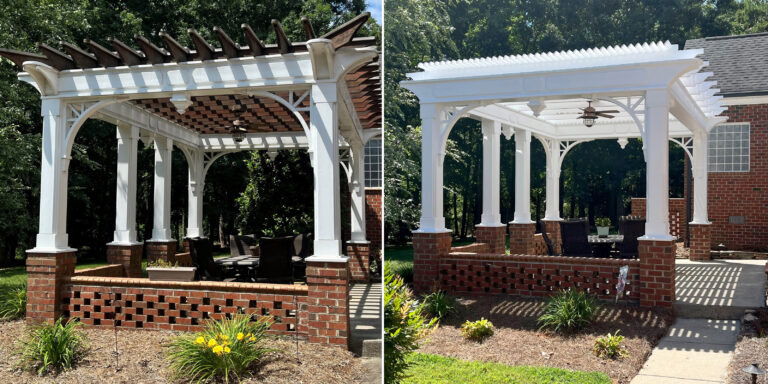
This traditional wood pergola had some rot on the rafters and shade slats but the column were still in good condition. The owners opted to replace the old wood rafters and roof with vinyl reinforced with aluminum to give them shade and add longevity to their structure!
The roof structure on this traditional wood pergola was rotting away. The beams were still in good condition with some upkeep and maintenance, so the homeowner replaced the roof with a no maintenence vinyl pergola roof with angled slats.
So, what is the point of a pergola?
For many, it’s purely aesthetic. A pergola can add grandeur to a simple backyard. It creates a purposeful space that is appealing to the eye, a focal point for your backyard and adds architectural interest to an otherwise open flat space. Pergolas are often used to create a specified area for a specific feature. For example, you may find a pergola that creates an outdoor room for something like an outdoor dining area or outdoor kitchen. It can create a welcoming space for entertaining day or night, or to just to curl up with a good book.
Since pergolas are not one size fits all, you can find additional benefits of a pergola based on the type of pergola you get for your home. Shade, shelter and comfort are all options with a pergola when you know what to look for!
Are pergolas good for shade
A less expensive, very traditional open rafter pergola is not going to be good for shade, but there are going to be plenty of pergola options that are good for shade!
Look for a pergola with angled purlins / angled louvres. Being at an angle and/or closer together than just an open rafter design, does actually create shade during the day!
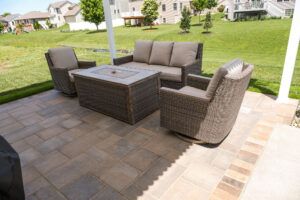
The shade created from this pergola allows you to enjoy the outdoors without the direct heat and sun beating down on you.
Some pergolas even have automated features such as retractable roofs and rotating louvres to control the light coming in. Letting you choose more or less shade during the day as needed.
Can you Create an Enclosed Pergola?
Yes, while a typical pergola is an open structure. That doesn’t mean you can’t take the extra steps to create privacy as well as shelter from the elements!
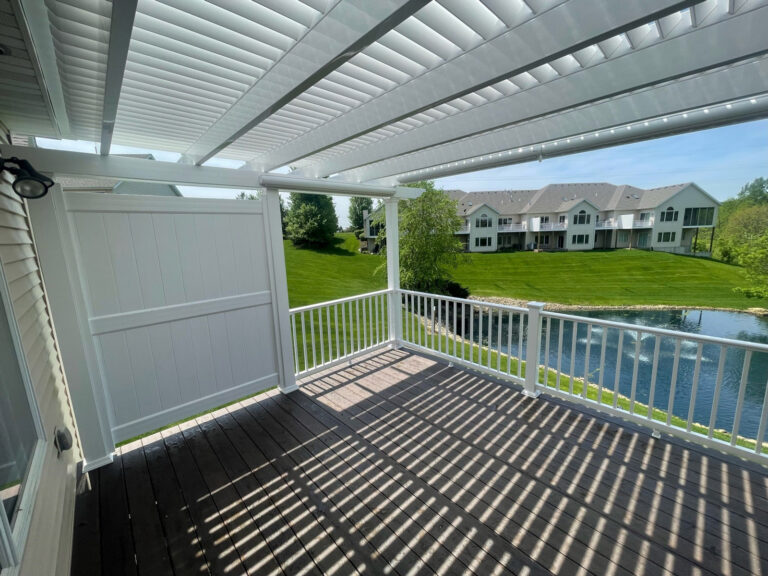
Add privacy panels, such as these for seclusion or to serve as a wind break.
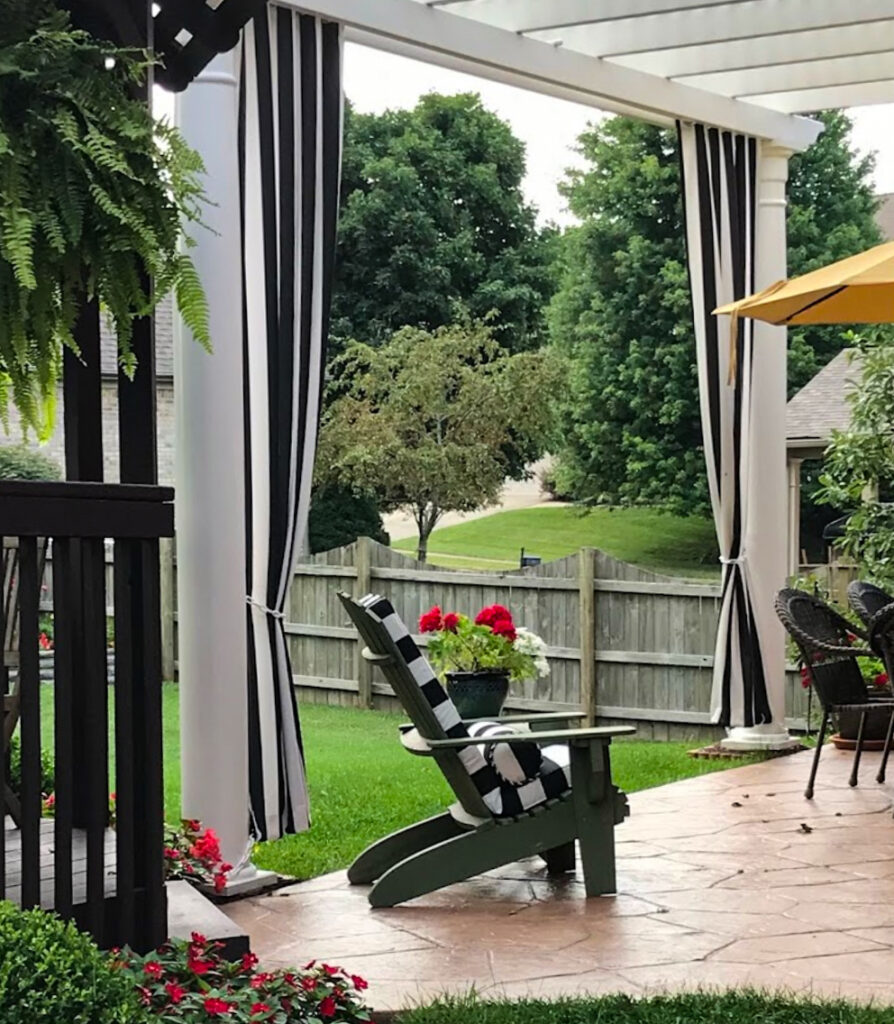
A less permanent solution would be to add curtains around your pergola structure that are easy to open and close when needed.
The top of your pergola doesn’t have to remain open! You can even cover the top of a pergola with something like a polycarbonate roof panel. A solid panel like this will keep light filtering in as it would normally but shield you from any rain so you can enjoy your pergola more!
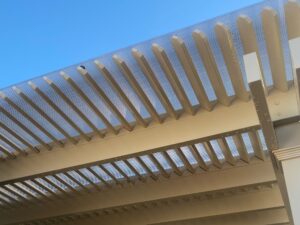
So what are the main benefits of a pergola?
- Easy to construct
- Less expensive than other types of structures
- Aesthetically pergolas provide beauty, create a focal point, and visual interest to highlight an outdoor gathering space
- Light weight and can be used on decks as well as out on patios, over landscape pavers, and garden areas
- Can be attached to an existing wall or structure or used as a fully free standing design
- Easy to fit into your home’s décor – either by the style of pergola chosen or material
- The open air structure makes pergolas safe to use with firepits or gas fire tables as well as outdoor kitchens, grills and smokers
- Easy to decorate and add pergola accessories like lights, fans, curtains, plants and climbing vines
- The right pergola can add shade to your space by use of purlins or louvres and or retractable roof tops
So next time someone starts to give pergolas a bad rap, you can give them a list of reasons why pergolas are so great! They may not be for every space or every homeowner, but they do have their perks and are enjoyed by people all over the world. Want to start a pergola search for your home? Start with our custom pergola builder.

